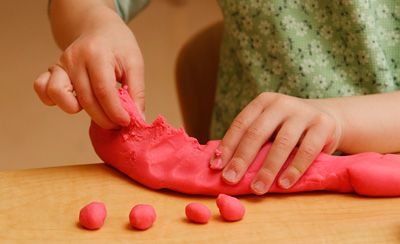Approximately
3,500 infants die annually in the United States from sleep-related infant
deaths, including sudden infant death syndrome (SIDS). New guidance from the
American Academy of Pediatrics is designed to help reduce those numbers. They
recommend supine positioning, the use of a firm sleep surface, room-sharing
without bed-sharing, and the avoidance of soft bedding and overheating.
Additional recommendations for SIDS reduction include breastfeeding, avoidance
of exposure to smoke, alcohol, and illicit drugs, routine immunization, and the
use of a pacifier. The recommendations and strength of evidence for each
recommendation are included in this policy statement. Read more at http://pediatrics.aappublications.org/content/early/2016/10/20/peds.2016-2938
Wednesday, December 14, 2016
Wednesday, November 30, 2016
December Community Activities
It's beginning to look a lot like Christmas! 
I hope everyone enjoyed Thanksgiving. Here are the community events in December.
West Bountiful:
December 5th at 5:00 pm - Santa will make his way through town on a fire engine and arrive at City Hall by 7:00 pm. Enjoy activities, cookies and hot chocolate while waiting to tell Santa what you want for Christmas.
Centerville:
December 6th, 13th, and 20th from 10:00 am to 6 pm - The 4th Annual Christmas at the Whitaker. Enjoy an old-fashioned Christmas. Make a craft, write a letter to Santa, and take home a treat enjoyed in pioneer days. Bring a camera and take a picture with Santa between 4:00 and 6:00 pm.
Farmington:
December 3rd from 10:00 am to 3:00 pm - Christmas with Santa. Make your appointment by calling 801 451-0953. Crafts, refreshments and Santa will be at the Community Arts Center. This activity is free to Farmington Residents.
Until December 16th, you can send letters to Santa at:
Santa Claus
1 Candy Cane Lane
North Pole, Ak, 99705
Fruit Heights & Kaysville:
December 31st from 6:00 to 10:00 pm - New Years Eve Celebration at Davis High. Fireworks, bingo, games, music and food.
West Point:
December 5th at 6:00 pm - City Hall Lighting Ceremony
December 23rd at 4:00 pm - Cemetery Luminary at West Point City Cemetery
Clinton:
December 3rd from 5:00 to 7:00 pm - Holiday Sing-a-long at Parkside Elementary
I hope everyone enjoyed Thanksgiving. Here are the community events in December.
West Bountiful:
December 5th at 5:00 pm - Santa will make his way through town on a fire engine and arrive at City Hall by 7:00 pm. Enjoy activities, cookies and hot chocolate while waiting to tell Santa what you want for Christmas.
Centerville:
December 6th, 13th, and 20th from 10:00 am to 6 pm - The 4th Annual Christmas at the Whitaker. Enjoy an old-fashioned Christmas. Make a craft, write a letter to Santa, and take home a treat enjoyed in pioneer days. Bring a camera and take a picture with Santa between 4:00 and 6:00 pm.
Farmington:
December 3rd from 10:00 am to 3:00 pm - Christmas with Santa. Make your appointment by calling 801 451-0953. Crafts, refreshments and Santa will be at the Community Arts Center. This activity is free to Farmington Residents.
Until December 16th, you can send letters to Santa at:
Santa Claus
1 Candy Cane Lane
North Pole, Ak, 99705
Fruit Heights & Kaysville:
December 31st from 6:00 to 10:00 pm - New Years Eve Celebration at Davis High. Fireworks, bingo, games, music and food.
West Point:
December 5th at 6:00 pm - City Hall Lighting Ceremony
December 23rd at 4:00 pm - Cemetery Luminary at West Point City Cemetery
Clinton:
December 3rd from 5:00 to 7:00 pm - Holiday Sing-a-long at Parkside Elementary
Tuesday, November 22, 2016
The Power of Routines for Shaping Behavior
I came across this article the other day by the program manager of "More Than Words - The Hanen Program for Parents of Children with Autism Spectrum Disorder." Here is a summary of the article.
The beauty of daily routines is that they provide recurrent opportunities for learning in a naturalistic, yet structured way. Routines include bathing, feeding, diaper changing, riding in a car - anything that a parent does with his or her child every day.
Children learn a variety of skills and knowledge through participation in daily routines, such as:
The beauty of daily routines is that they provide recurrent opportunities for learning in a naturalistic, yet structured way. Routines include bathing, feeding, diaper changing, riding in a car - anything that a parent does with his or her child every day.
Children learn a variety of skills and knowledge through participation in daily routines, such as:
- Social Roles - such as how to initiate and respond in socially appropriate ways, to understand the words that people say and how to participate with others as an equal conversational partner. In order for children to learn how to initiate, parents need to give opportunities to children to do so. Initially, the parent is leading the routine and doing most of the work, but as they child learns and develops the skills to participate, opportunities need to be available for the child to initiate and participate more. The parents job is to teach the routine and then be willing to watch for and respond to cues the child provides.
- Understanding Meaning of Words - by making routines language rich experiences (talking about what you are doing and what the child is doing and labeling things), parents are able to "map" words onto objects and through many experiences with the same words, children are able to attach meaning to the words.
Here are some guidelines for making daily routines into learning opportunities.
- Break routines into a series of small consistent steps, so that there's a shared understanding of how the routine goes. It may be helpful to visually represent the routine through a series of pictures to make it easier for the child to know what he is supposed to do.
- Be flexible. Young children learn best when you follow their lead. If the child wants to roll on the bed when he's putting on his pajamas, instead of trying to eliminate this behavior, work it into the routine by saying, "First, put on your pajamas and then you can roll on the bed." If the child sees that there is a reward for following the steps of the routine, he'll be more likely to comply. And just as much learning can take place in a playful game of rolling on the bed as in putting on pajamas!
- Label what the child's interested in at the very moment it seems to be his focus. Studies show that the most important aspect of an adult's language input in helping children's word comprehension is timing. For example, if the child looks at pizza and the adult labels the cup, what the parent says won't help the child crack the language code at all.
- Be creative. Routines can be made out of anything that the parent and the child do together regularly. Routines can be created around planing flowers, changing a bandage or baking cookies. The best learning opportunities are the ones that are the most fun.
Tuesday, November 15, 2016
Make the Most of Play Time
Excerpts taken from an article published in the October 2016 issue of Baby Talk.
Playing with your child in the first three years of life helps the two of you build a warm and loving relationship. Playing together also supports the development of essential social skills (like sharing and turn taking), language skills (like labeling objects, making requests, commenting), and thinking skills (like problem-solving).
For babies and toddlers, play is their “work.” It is through play and repetition that babies and toddlers try out and master new skills. Through play, they learn what can happen as a result of an action, explore their imagination and creativity, learn to communicate, and learn about relationships with other people. Any activity can be playful to young children, whether it’s a game of peek-a-boo or helping you wipe the table with a sponge. And all types of play help children learn and practice new skills.
So what can you do to make the most of your child's playtime? Check out the tips below.
Follow Your Child’s Lead Provide an object, toy, or activity for your baby or toddler and then see what he/she does with it. When your child plays, it's okay if it's not the "right" way...let him/her show you a "new way." For example, when you hand your child a plastic cup, instead of pretending to drink from it, he/she might put it on his/her head as a “party hat”. Support your child’s creativity and join in the birthday play.
Go Slowly It's great to show your child how a toy works, but try to hold off on "doing it for him/her" every time. You can begin something, such as stacking one block on another, and then encourage your child to give it a try. Providing just enough help to keep frustration at bay motivates your child to learn new skills.
Read Your Child’s Signals Your little one might not be able to tell you with words when he/she's had enough or when he/she's frustrated. But your child has other ways— like using sounds, facial expressions, and gestures. Reading these signals can also tell you what activities your child prefers. Reading the signals that come before a tantrum help you know when to jump in or change to a new activity.
Look at Your Play Space Is the area where you play child-friendly and child-safe? Is there too much noise or other distractions? Is the area safe to explore? Is this a good place for the activity you've chosen, such as running, throwing balls, or painting? Checking out your space beforehand can prevent a tantrum, an accident, or a broken lamp.
Play It Again, Sam While doing things over and over again is not necessarily thrilling for Mom and Dad, it is for young children. They are practicing in order to master a challenge. And when your child can do it “all by myself!” he/she is rewarded with a powerful sense of his/her own skills and abilities—the confidence that he/she is a smart and successful being. The more children have a chance to practice and master new skills, the more likely they are to take on new challenges and learn new things. So when you’re tempted to hide that toy because you don’t think you can stand playing with it one more time, remember how important repetition is to your child’s development.
To read the full article, go to http://csefel.vanderbilt.edu/documents/make_the_most_of_playtime2.pdf
Playing with your child in the first three years of life helps the two of you build a warm and loving relationship. Playing together also supports the development of essential social skills (like sharing and turn taking), language skills (like labeling objects, making requests, commenting), and thinking skills (like problem-solving).
For babies and toddlers, play is their “work.” It is through play and repetition that babies and toddlers try out and master new skills. Through play, they learn what can happen as a result of an action, explore their imagination and creativity, learn to communicate, and learn about relationships with other people. Any activity can be playful to young children, whether it’s a game of peek-a-boo or helping you wipe the table with a sponge. And all types of play help children learn and practice new skills.
So what can you do to make the most of your child's playtime? Check out the tips below.
Follow Your Child’s Lead Provide an object, toy, or activity for your baby or toddler and then see what he/she does with it. When your child plays, it's okay if it's not the "right" way...let him/her show you a "new way." For example, when you hand your child a plastic cup, instead of pretending to drink from it, he/she might put it on his/her head as a “party hat”. Support your child’s creativity and join in the birthday play.
Go Slowly It's great to show your child how a toy works, but try to hold off on "doing it for him/her" every time. You can begin something, such as stacking one block on another, and then encourage your child to give it a try. Providing just enough help to keep frustration at bay motivates your child to learn new skills.
Read Your Child’s Signals Your little one might not be able to tell you with words when he/she's had enough or when he/she's frustrated. But your child has other ways— like using sounds, facial expressions, and gestures. Reading these signals can also tell you what activities your child prefers. Reading the signals that come before a tantrum help you know when to jump in or change to a new activity.
Look at Your Play Space Is the area where you play child-friendly and child-safe? Is there too much noise or other distractions? Is the area safe to explore? Is this a good place for the activity you've chosen, such as running, throwing balls, or painting? Checking out your space beforehand can prevent a tantrum, an accident, or a broken lamp.
Play It Again, Sam While doing things over and over again is not necessarily thrilling for Mom and Dad, it is for young children. They are practicing in order to master a challenge. And when your child can do it “all by myself!” he/she is rewarded with a powerful sense of his/her own skills and abilities—the confidence that he/she is a smart and successful being. The more children have a chance to practice and master new skills, the more likely they are to take on new challenges and learn new things. So when you’re tempted to hide that toy because you don’t think you can stand playing with it one more time, remember how important repetition is to your child’s development.
To read the full article, go to http://csefel.vanderbilt.edu/documents/make_the_most_of_playtime2.pdf
Tuesday, November 8, 2016
What's Happening To Fine Motor Development?
This article is from Community PlayThings.
Lacking Fine Motor Skills is not "Fine" in Kindergarten
A new and disturbing phenomenon is rising on the educational horizon. Many children are arriving at kindergarten lacking the basic fine motor skills needed to hold a pencil and write. This lack of dexterity in their fingers and hands can be attributed to theincreased use of touch screen technology and decreased use of crayons, paints, pencils, scissors, clay, and other manipulatives in their daily lives.
Along with social-emotional skills and curiosity, fine motor skills are among the priority readiness skills for kindergarten. If children arrive at school lacking the fine motor control and finger strength necessary to hold a pencil, they will struggle to master other requirements in kindergarten. This is a huge problem because today’s kindergarten demands so much more writing and desk work than ten years ago.
Children are arriving at school lacking the fine motor strength necessary to hold a pencil.
This predicament cannot be remedied over-night. Like large motor skills, fine motor skills develop gradually over time with much practice and repetition. Perhaps we are more aware of the more visible and exciting large motor achievements: A child first holds her head up, rolls over, then sits, crawls, pulls to a stand, walks, then runs. Fine motor development starts with grasping objects (mommy’s finger, a rattle, a toy), holding a bottle, picking up food to eat, manipulating a spoon, using hands for purposeful reasons like block building and play dough, buttoning and zippering, using art tools to draw and write, and only then using a pencil or pen to write a name or copy words. While these two progressive developmental sequences are normal in child development, if the sequence is impeded along the way, the child will not develop as she should. We are seeing this with fine motor development in today’s five-year-olds who, from infancy, are spending too much time “swiping and tapping” on screens and not playing with a large range of manipulatives.
Technology is not going away, so it is up to adults to limit its use and ensure that young children have normal childhood play experiences. The American Academy of Pediatrics recommends absolutely no screen time for children under the age of two, and less than an hour a day for preschoolers. Parents should not give their smart phones to babies in their car seats or strollers. They should not play videos for infants and toddlers to keep them occupied. They should not take iPads to restaurants. Preschoolers should not have televisions in their bedrooms.
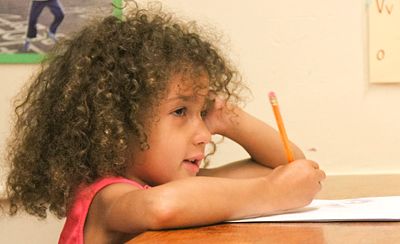
Children learn by doing and experiencing, not just passively watching.
Advertising often convinces parents that children are learning from the two-dimensional computer games and applications they use. Children, however, live in a three-dimensional world and need to be learning from interactions with real objects or people. For example, the way children learn what “three” means is to hold three objects, eat three grapes, build with three blocks, see how many sets of three are in a little box of raisins, make a triangle with three pretzel sticks. Children learn by doing and experiencing, not by passively watching.
The classic materials of childhood are time-tested to provide practice in fine-motor skills, strengthening all the little hand muscles. Adults should ensure that children have access to these materials both at home and at childcare centers:
- crayons, markers, chalk, paints, pencils, scissors
- blocks, Lego, other manipulatives
- dolls and stuffed animals for dressing and undressing
- play dough, finger paint, clay, mud
Finger games like Itsy Bitsy Spider and Where is Thumbkin? are also excellent in increasing coordination of the fingers and hands.There are so many wonderful and playful activities that adults can do with children with to help build fine motor skills.
The Gesell Developmental Observation-Revised (GDO-R) assessment evaluates many kindergarten readiness skills. In recent years though, teachers have commented that low scores in fine motor skills pulled down the children’s overall developmental age. Some teachers asked if they could ignore the fine motor section of the assessment. The answer is no! Fine motor skills are a very important part of whole child development and are essential for academic success.
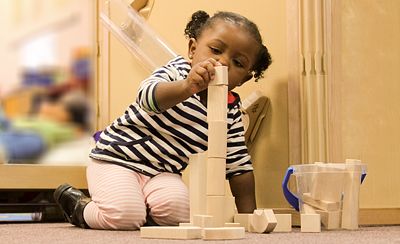
At-Home Activities for Building Fine Motor Skills
Try incorporating these activities into the daily routine with your child:
Kitchen projects: Making home-made play dough strengthens muscles in the hands and fingers. Roll snakes and balls of all sizes; build with the balls and snakes. Your child can play with play dough at the counter or table while you make dinner.
Make peanut butter or sugar cookies that require the dough to be rolled into balls and smashed with a fork. Meatballs are fun and yummy, too.
Playing Grocery Store: Keep your canned goods on a bottom shelf. Allow your child to play grocery store—take out and rearrange the cans, sort by size, color, or content. This is a math readiness skill, too.
Sorting silverware or setting the table: Sorting silverware into its proper holder is a math skill; as is the patterning your child will do by laying the napkin, knife, fork, and spoon in order at each place-setting.
Eating with chop sticks: This is a more advanced fine motor skill, but not impossible to teach. Children in Asian countries learn quite young. Use chopsticks to pick up cotton balls, round cereal, or other small objects.
Folding clothes: Start with folding washcloths or towels. Fold in half, then fold again to make a quarter.
Stringing things: Make bracelets and necklaces by threading pasta, Fruit Loops, or beads onto pipe cleaners or thick strings. Add a pattern and you add math!
Playing dress-ups: Putting on coats and gloves, zipping up, snapping, buttoning, and tying shoes all help with building fine motor strength. Dressing a doll or stuffed animals is just as good, too!
Practicing with scissors: Start with safety scissors and a 4" strip of paper to snip, snip, snip with and make fringe. Later, draw a path on the paper to cut along. Make confetti by cutting little snips of various colored, textured, and shiny wrapping paper. Cut pictures out of magazines and make a collage. Play dough is an excellent soft material for beginners to practice scissor skills on. Roll snakes and cut them into pieces.
Coloring and drawing: Encourage creativity by providing a variety of art mediums. Color with hard pressure, color with soft pressure. Outline the object hard, color soft inside. Instead of coloring, have the child fill the space with little controlled circles—pointillism—a captivating art technique.
Limiting technology: Put away the electronics. Or, better yet, create your own “TV program” by making a story scroll. After drawing out the story, scene by scene, on a long piece of paper, roll the paper tightly onto a cardboard tube. Make a "screen" by cutting a window out of a cardboard box. Mount the scroll inside the box on the left. Stretch the beginning of the story across the screen and tape it to another empty roll mounted on the right side of the box. Turning the right tube to make the scroll move helps develop fine motor skills too.
Tuesday, November 1, 2016
November Community Activities and December Community Activities Information
November Community Activities:
November 6th - Daylight Savings Time Ends! Remember to turn your clocks back and get an extra hour of sleep!
November 28th - Centerville Festival of Lights at Founders Park. Lights turn on at 6:00 pm. Enjoy entertainment, Santa and treats!
November 28th - Kaysville Christmas Light Parade on City Hall Block at 5:45 pm. Enjoy the lighting of the Christmas Tree and Electric Parade down Main Street with delicious hot chocolate!
Hogle Zoo Free Days:
Free admission to Hogle Zoo on November 30, December 28, January 25, and February 22.
Tracy Aviary $1 Admission:
You can visit Tracy Aviary for $1 per person on all Wednesdays November through March!
November 6th - Daylight Savings Time Ends! Remember to turn your clocks back and get an extra hour of sleep!
November 28th - Centerville Festival of Lights at Founders Park. Lights turn on at 6:00 pm. Enjoy entertainment, Santa and treats!
November 28th - Kaysville Christmas Light Parade on City Hall Block at 5:45 pm. Enjoy the lighting of the Christmas Tree and Electric Parade down Main Street with delicious hot chocolate!
Hogle Zoo Free Days:
Free admission to Hogle Zoo on November 30, December 28, January 25, and February 22.
Tracy Aviary $1 Admission:
You can visit Tracy Aviary for $1 per person on all Wednesdays November through March!
December Community Activities
Parents teach their children every day in a variety
of situations and environments – they are the ones who make the most difference
in their child’s development. In order
to support parents in all situations and locations, we provide an opportunity
for families to receive support and learn strategies to make outings successful
through December Community Activities. This
is a billable service. Davis Early
Intervention has coordinated with several community agencies to participate in
activities that are available to Davis County Residents. You will receive a list of available
activities and be given the opportunity to select an activity in which your
family would like to participate. Our
Early Intervention staff will be present at the activities to provide support
and strategies for your family to have an enjoyable and successful
experience. There are many benefits of
receiving services in the community.
·
A child is more likely to generalize skills learned
in natural environments. Parents find themselves in an ever changing
variety of settings and children need to learn how to succeed in all
environments.
·
All children learn to understand and accept
differences. Children with delays and disabilities are
able to participate in the same activities as other children in the
community. Children who don’t have
disabilities also benefit from playing and being with children who do have
disabilities.
·
A child is more likely to learn appropriate and
effective social skills. Children with delays and disabilities need the
opportunity to learn by imitating and participating in the play and social
interactions of their typically developing peers.
·
Every child has an opportunity to participate in
his or her community. Every child should be able to participate in
activities that allow them to interact in the community.
·
Communities recognize that children with special
needs are children first. The community benefits from opportunities to
become acquainted with families and their children with developmental delays or
disabilities.
·
Children and families experience a sense of
belonging.
Shared activities provide opportunities for children and their families
to build friendships and increase natural supports.
·
Children receive the opportunity to practice their
skills.
Community activities allow the child and family to shift the focus from
acquisition and practice of developmental skills to functional and social
competence.
Monday, October 24, 2016
ALL THINGS KIDS EXPO
Here is information on the First Annual Kids Expo!
The Expo is free but if people pre-register on Eventbrite at
https://allthingskids.eventbrite.com
they get an extra prize entry ticket for every attendee they bring. Folks
can find out more at Eventbrite or http://cssutah.org/all-things-kids-expo/
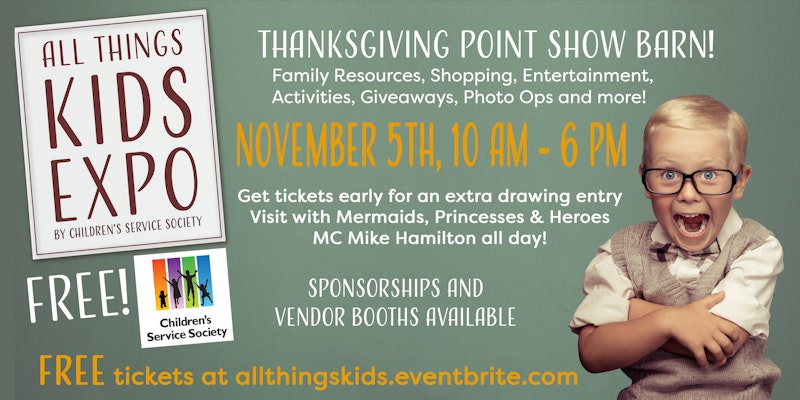
DESCRIPTION
Parenting helps, free activities for the kids, community resources and vendor booths will be ready for you at the Children's Service Society All Things Kids Expo! Bring the whole family and enjoy this fun, FREE, fall festival that will help the children in your care play, learn and grow!
Major Sponsor Kids Out and About will be there with a fun booth.
And so will our celebrity MC Mike Hamilton, loved for his Magic of Learning presentations!
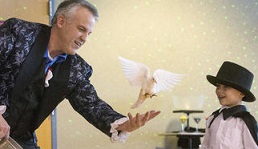
AND the amazing Scales and Tails Utah, reptile display
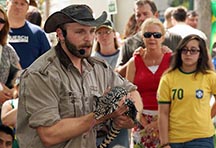
Get your FREE ticket and extra chances to win valuable prizes by pre-registering here on Eventbrite! One ticket is needed for each person over 2 years of age entering the Expo. When your ticket is shown at the entrance you will be entered in drawings to win valuable prizes at the expo PLUS we will draw for prizes before the Expo! :)
Enjoy:
- Costumed character meet, greet and photo ops - Curious George, Court of Mermaids, Princesses, Star Wars!
- Kids craft and hands-on learning activities
- Holiday and all-round gift shopping
- Prizes and giveaways - four or more per hour! Two round-trip tickets from Jet Blue Grand Prize!
- Fun and helpful vendor booths
- Entertainment - the One Voice Choir, Capoeiria, Rinceoiri Don Spraoi Irish Dancers, Bobby Lawrence Karate and more!
- Community and parenting resources
- Mother's room and changing tables
- Handicapped accessible on main floor
- Adjacent free parking
- Snack bar run by Thanksgiving Point
- And did we mention GREAT shopping?!?
Children's Service Society is a 501(c)3 nonprofit organization. Proceeds gained through this expo will help fund programs to help prevent child abuse and neglect.
Please contact Katie@cssutah.org for more information or call 801-326-4364.
Tuesday, October 18, 2016
DIY Christmas Toy Ideas - Check!
This post is taken from Happy Hooligans blog at http://happyhooligans.ca/70-awesome-toys-make-kids/. These are all simple, yet amazing ideas of homemade toys for toddlers and little ones. If you are looking for ideas for Christmas presents, these are great! They may take a little time to make, but none require batteries (my #1 rule for toys for kiddos).
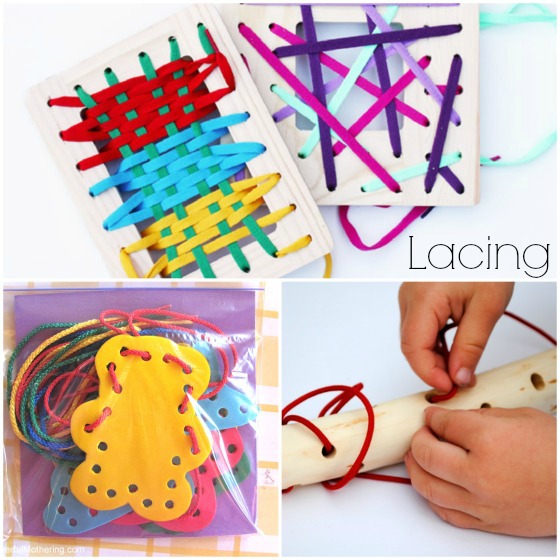
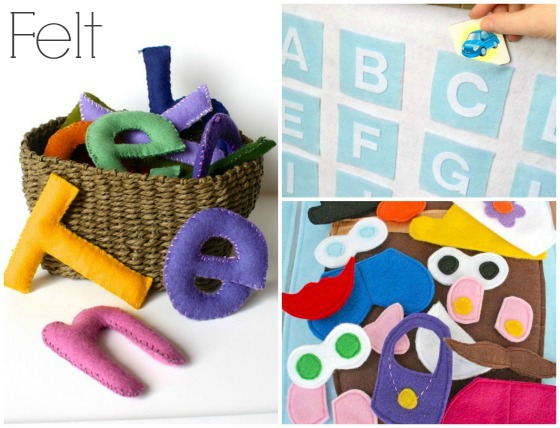

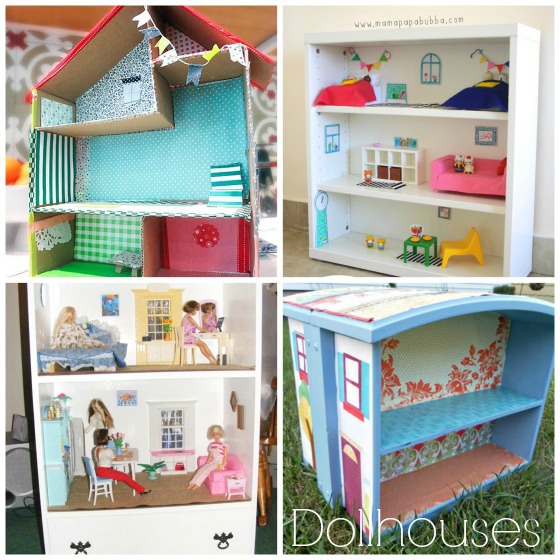
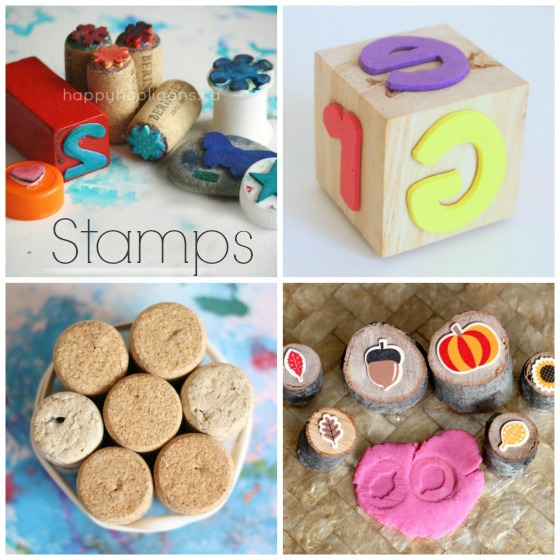
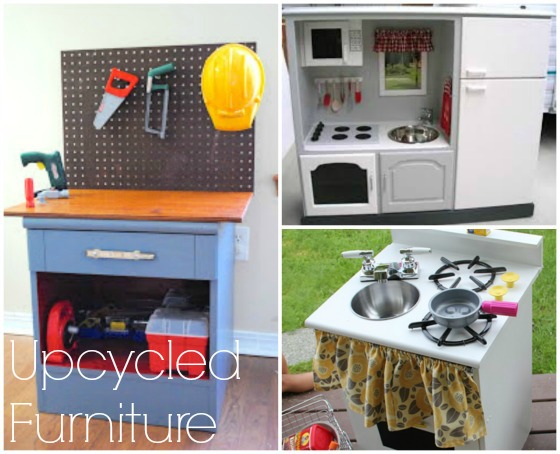
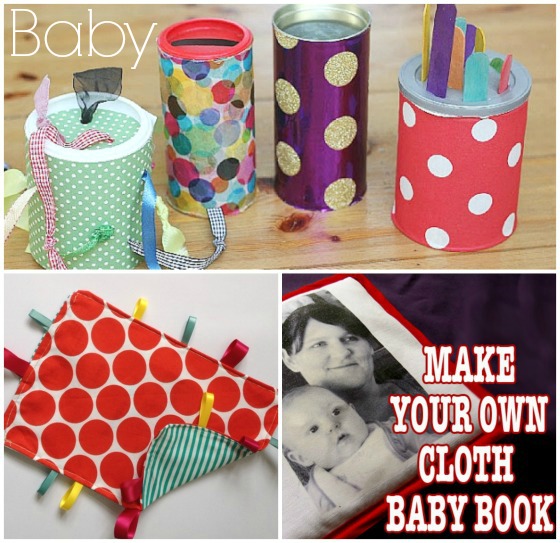
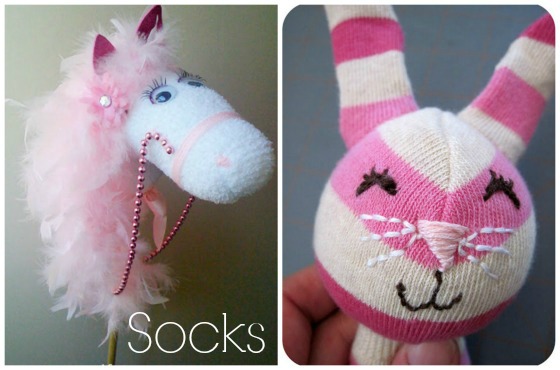
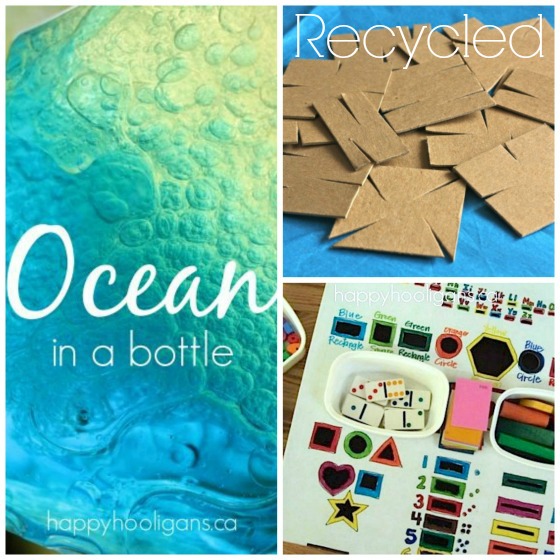

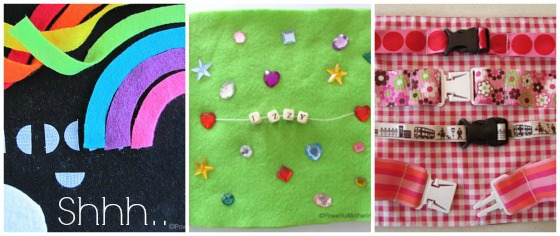
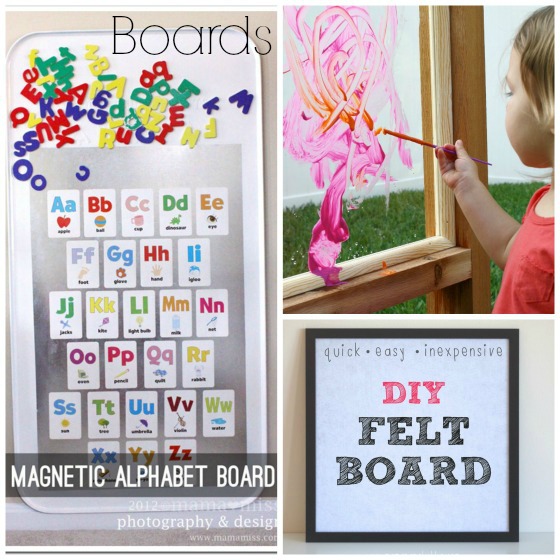
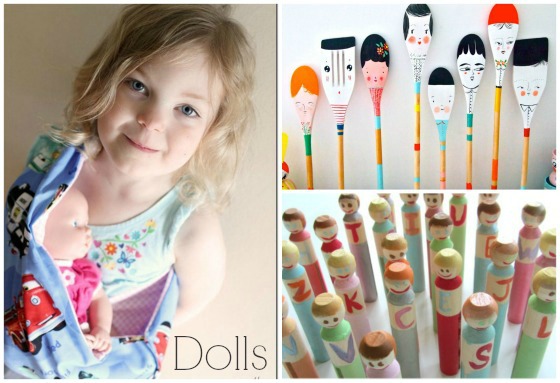

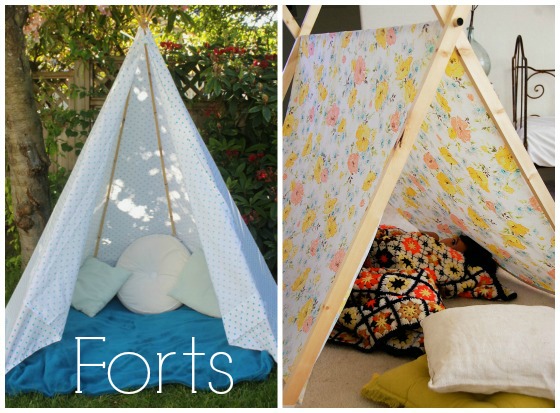
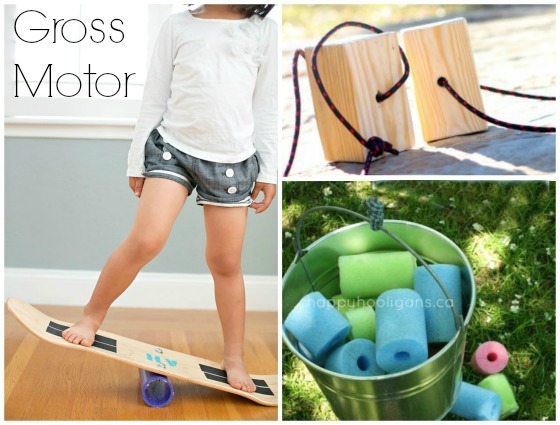
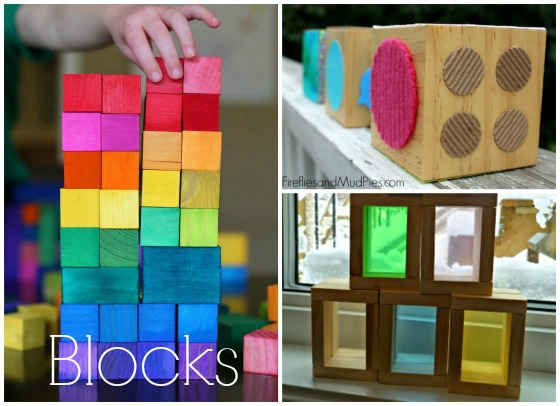
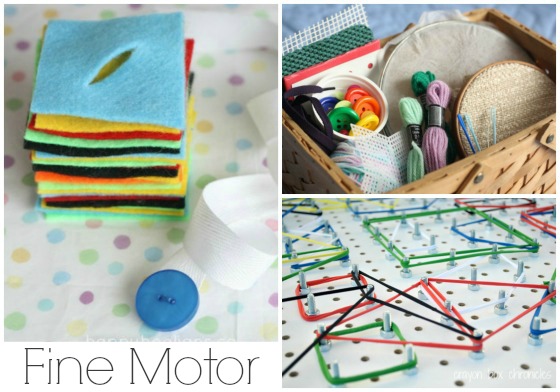
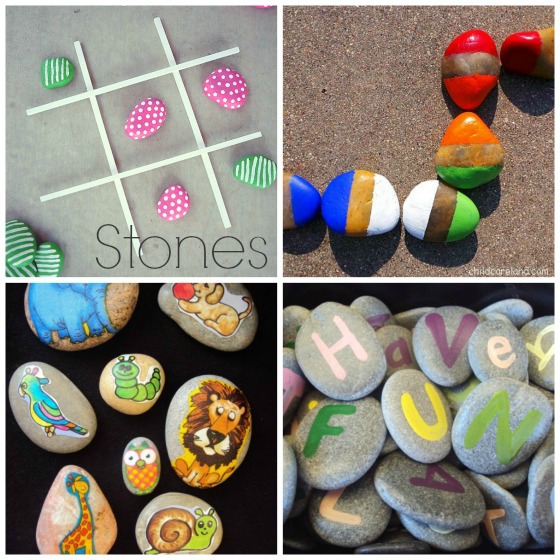
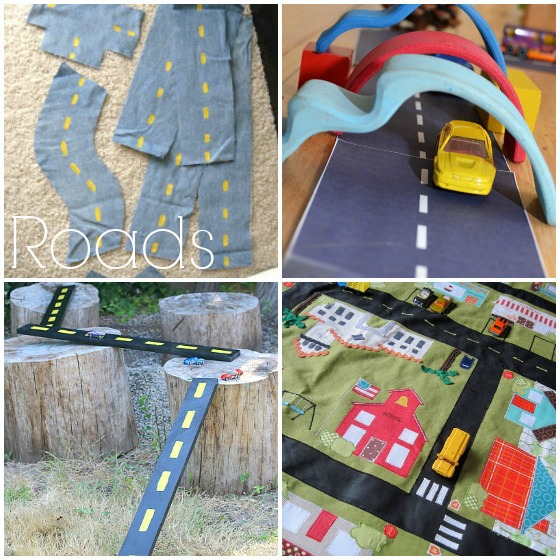
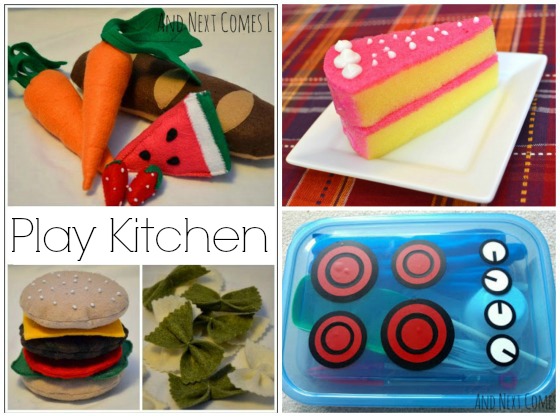
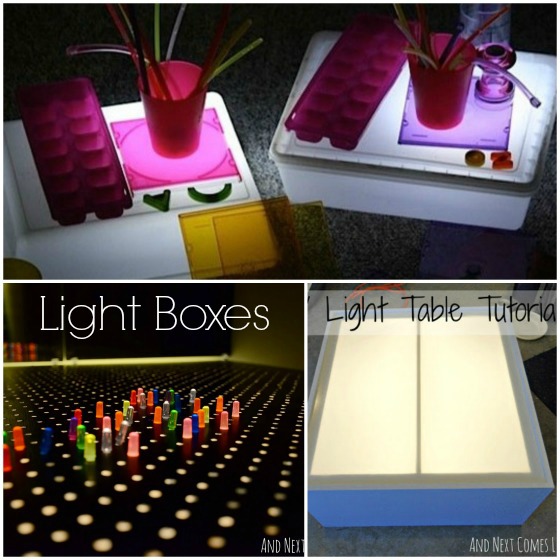

All of these toys are fairly easy and inexpensive to make. Some are knock-offs of brand name toys, and some of these toy ideas are truly original. One thing is certain – they’re all perfect if you like to give kids handmade gifts at Christmas, birthdays or any day!

Homemade Lacing Toys:
These simple lacing frames are easy to make and great for helping little ones develop their fine motor skills. - Babble Dabble Do
Shaped foam lacers are easy for little hands to grip and a fun way to practice threading skills. - Powerful Mothering
I adore this all-natural, stick threading game by Mini Eco.

Homemade Felt Toys for Toddlers:
Here’s a soft and colourful way for toddlers to explore the alphabet: stuffed, hand-sewn felt letters by Buggy and Buddy.
Make a no-sew, alphabet pocket chart to help little ones learn their letters. – Lalymom
I see countless hours of creating and re-creating here with this gorgeous potato head felt set. – jocelynandjasonblogspot

DIY Activity boards for the playroom or classroom:
Babies and toddlers will LOVE exploring all the textures and gadgets on these awesome sensory boards by Fun at Home with Kids.
Make a latch board like Domesticesq did with random bits and bobs from the work shop or hardware store.
My boys would’ve LOVED a life-sized dashboard like this one made from used parts. – And Next Comes L

Upcycled Homemade Dollhouses:
Got cardboard? Handmade Charlotte shares 6 ways to make a dollhouse out of a cardboard box.
Mama Papa Bubba shows you how she and her daughter made this simple but beautifuldollhouse from an inexpensive bookshelf.
Check out how Roadkill Rescue turned an old dresser into a larger-than-life Barbie house. Handy storage drawer in the bottom!
Upcycle the drawers from an old bedside table into this adorably charming dollhouse by Semi Proper.

Homemade Stamps:
6 ways to make homemade stamps for toddlers using common household items. – Happy Hooligans
Help your little one learn to spell his name with this simple homemade name stamp by Mama Papa Bubba.
Decorate homemade cards, wrapping paper or fabric projects with this spring flower wine-cork stamp. Happy Hooligans
Kids can make imprints in play dough with these rustic tree block stamps by Two-da-loo.

Toys from upcycled furniture:
I adore this workbench/tool station that The Frugal Granny made from an old bedside table.
How about this AMAZING upcycle? A deluxe play kitchen made from an old tv/entertainment cabinet! – Giggleberry Creations
Fresh Crush transformed a night-stand into a play kitchen for about $30 using cast-offs and inexpensive accessories.

Homemade toys for babies:
Turn your recyclables into a variety of colourful, fine-motor toys for babies and young toddlers. The Imagination Tree
Crafts on Sea has a homemade tag blanket that will delight babies with its crinkling sound and soft, satiny tags.
Childhood 101 shows you how to turn your family photos into a cloth baby book for your little one to enjoy.

Homemade Sock Toys:
Attempting Aloha transforms a sock into a glamorous hobby-horse that any little rider would love.
Turn a sock into an adorable baby rattle with some stuffing and a few simple stitches. – Homemade by Jill

Toys from the Recycle Bin:
An empty plastic bottle + 3 basic kitchen ingredients = a mesmerizing “ocean in a bottle”. – Happy Hooligans
Kids who love to build will enjoy this homemade construction set made from a few pieces of sturdy cardboard – Happy Hooligans
Teach shapes, colours, letters and numbers with this cardboard box turned drop box. The kids have been using ours for years.

Homemade Toys for Outdoors:
It would be so dreamy to spend an afternoon reading in one of these Hula Hoop Hideouts. – Alanna George
Ok, I totally want to hang out on this DIY water blob by Homemade Toast. Bonus: It’s leak-proof!
Check out how Dyan turned a few dollar-store shower curtains into this awesome toddler parachute. – And Next Comes L

Homemade Quiet Books:
A quiet book is perfect for those times when you need to keep your kids busy… and quiet. I lovethis no-sew version by Powerful Mothering.
This busy book by Mouse House has “pages” of colourful quiet activities to keep little hands busy and learning.

Homemade Activity Boards:
Turn an inexpensive oil-drip pan into a gigantic magnet board for the playroom or classroom. – Mama Miss
Make an outdoor easel for your kids to get artsy and creative with in the backyard. – Fantastic Fun and Learning
See how Mama Papa Bubba quickly turned an inexpensive frame into a homemade felt board.
*Want to know an easy way to cut your own felt pieces for your felt board? Check out this awesome felt-cutting tutorial by Juggling with Kids.

Homemade Doll Toys:
Make a fabric doll sling for your little one to carry her babies around in. – Mama Smiles
Check out this whimsical family of wooden spoon dolls decorated by Jess Quinn.
Paint up a set of wooden alphabet dolls for play and learning. – No Time for Flashcards

This really is the best-ever play dough! It keeps for months, so it’s perfect to make ahead and give as a gift. - The Imagination Tree
Did you know you can make your own silly putty? - Coffee Cups and Crayons shows us how.
 Homemade Indoor Hopscotch:
Homemade Indoor Hopscotch:
I had fun making this homemade cardboard hopscotch. Laying the tiles out helps the hooligans with their number recognition and ordering skills.
Make a new-sew hopscotch mat that you can roll up and tuck away when not in use. There are games on the reverse side too! - A girl with a Glue Gun

Homemade Forts and Tents:
Set up a 5-minute teepee in the backyard! What a magical place for a little one to spend a summer afternoon. – Mama Papa Bubba
For those of you who like to sew, Cakies shows you how to make a simple A-frame tent for the kids to use indoors or out.
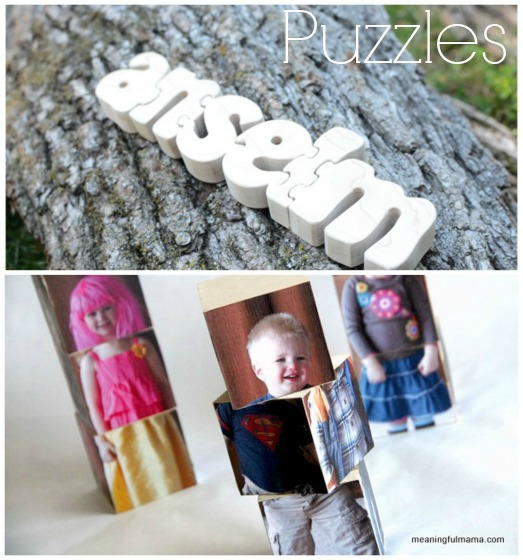 Homemade Puzzles for Toddlers:
Homemade Puzzles for Toddlers:
Adventure in a Box shows you how to make a wooden name puzzle for your child. You’ll have this lovely keepsake for years.
Turn a set of wooden blocks and some family photos into these nifty, interchangeable people puzzles. – Meaningful Mama

Homemade Toys for Gross Motor Development:
See how Hello Wonderful turned a skateboard deck into homemade balance board to help develop core and large-motor strength.
Build a set of simple wood block stompers. They can be used at two different heights depending on the age of your child. – I Can Teach My Child
This bucket and rope contraption was free to make, and it’s provided hundreds of hours of open-ended play here in our backyard.

Homemade Coloured and Textured Blocks:
Fun with Kids at Home shows us how to easily add a pop of vibrant colour to a set of plain wooden blocks. So gorgeous!
Babies and toddlers will love exploring the colours and textures of these homemade sensory blocks. – Fireflies and Mudpies
$3 bucks, a trip to the dollar-store, and some hot-glue will get you this fab set of coloured light blocks. -And Next Comes L

Fine Motor Toys to Make for Kids:
A colourful button snake is easy to make and helps little ones develop their fine motor and buttoning skills. – Happy Hooligans
Put together a sewing basket filled with lots of goodies for a preschooler to explore and practice early sewing skills with.
I just love Crayon Box Chronicles’ homemade geo board. Little ones can sharpen their fine motor skills while learning about shapes and geometry with rubber bands or fabric loops.

Stones for Play:
Make an adorable stone tic-tac-toe game to match your child’s favourite colours, like this one from Eighteen 25.
Paint up a set of non-traditional, rock dominoes for the kids to play and learn with. – Childcareland Blog
Story Stones are fun and easy to make, and great for narrative play, and developing story-telling skills. – Happy Hooligans
Alphabet stones are perfect for a game of outdoor “hangman” or to simply teach your child their letters through open-ended play.

Homemade Toys for Car-Loving Kids:
Turn your old jeans into fabric roads! Easy to make, and to stash in the diaper bag when you’re going out. – Lil Mop Top
Visit Picklebums to get these free, printable roads. Your kids can build a whole city!
Buggy and Buddy painted up a set of simple wooden roads and ramps for her son. Think of the hours of fun these would provide.
If you love to sew, this amazing car mat would be a super project and keepsake to make for your child or grandchild. – Homemade by Jill

Homemade Play Kitchen Toys:
And Next Comes L has some great felt food ideas that you can make for your child’s play kitchen.
Turn a package of inexpensive kitchen sponges into colourful foam cakes and cookies like the ones Inner Child Fun made.
LOVE this! Turn a plastic storage container into a pretend cook-top. Store the baking instruments inside! – And Next Comes L

Make an inexpensive, portable light box using a kitchen storage container and an LED light. Store the toys inside!
And Next Comes L shows you how to turn a basic pegboard into a light bright game for your home or classroom.
Want a full-size light table for much less than it costs to buy one? Check out this step-by-step tutorial from And Next Comes L.

More homemade blocks to make:
I love these colourful magnetic blocks that You Clever Monkey made for their magnet board.
How inviting are these Waldorf-inspired nature blocks that Adventure in a Box made. What a lovely way to build and create.
And last, but not least: take your block building into a new dimension (literally) with a set of these homemade velcro blocks by Chasing Cheerios.
Subscribe to:
Posts (Atom)
